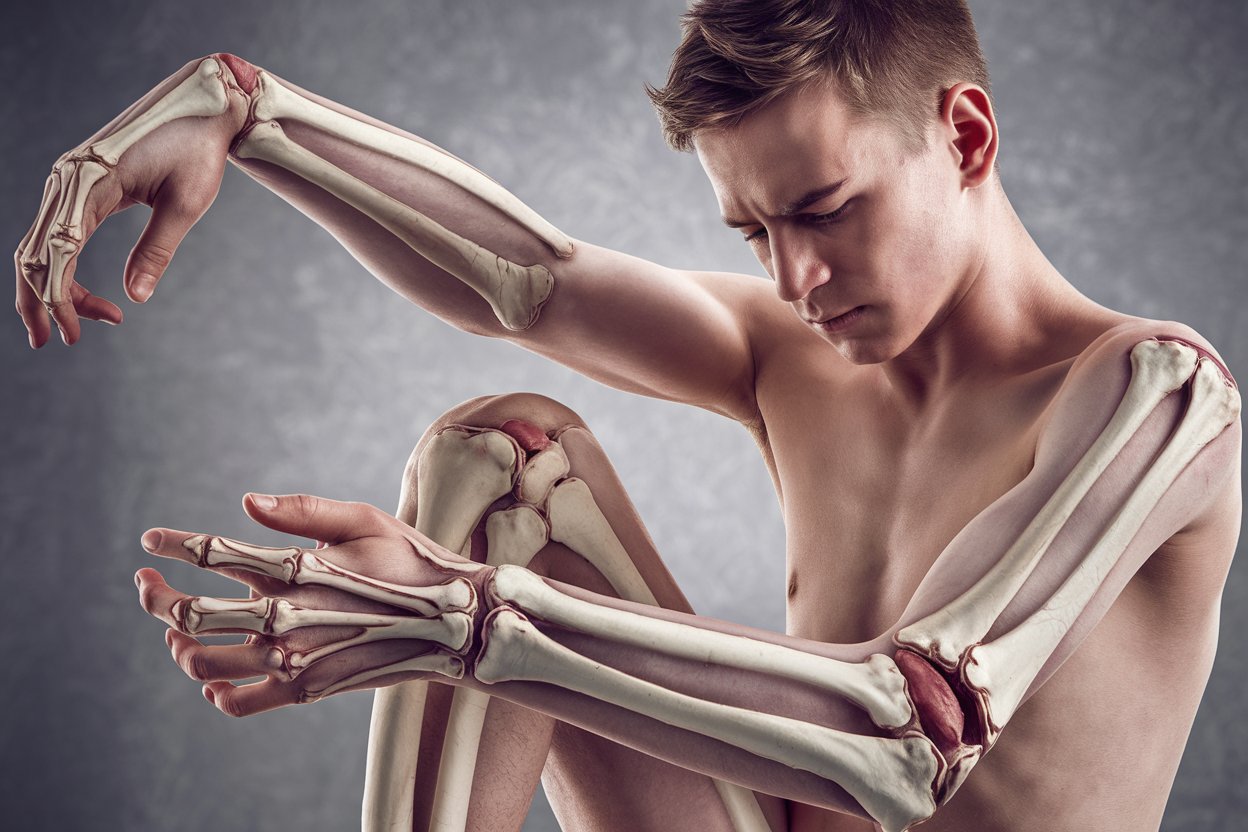
Multiple Joint Dislocations Metaphyseal Dysplasia is a rare genetic disorder that affects bone development, leading to frequent joint dislocations and abnormal bone growth. This condition can significantly impact daily life, making simple tasks challenging. Understanding the key facts about this disorder can help those affected and their families manage symptoms more effectively. From its genetic roots to the physical manifestations, learning about Multiple Joint Dislocations Metaphyseal Dysplasia provides valuable insights into its complexities. Did you know that this condition often presents in childhood and can be diagnosed through genetic testing? Let's dive into 25 essential facts that will shed light on this rare but impactful disorder.
Key Takeaways:
- Multiple Joint Dislocations Metaphyseal Dysplasia (MJDMD) is a rare genetic disorder causing frequent joint dislocations, skeletal abnormalities, and potential complications like arthritis and respiratory issues.
- Treatment involves physical therapy, orthopedic interventions, pain relief, assistive devices, regular monitoring, genetic counseling, and support groups for families affected by MJDMD.
What is Multiple Joint Dislocations Metaphyseal Dysplasia?
Multiple Joint Dislocations Metaphyseal Dysplasia (MJDMD) is a rare genetic disorder affecting bone development and joint stability. This condition can lead to frequent joint dislocations and skeletal abnormalities. Here are some intriguing facts about MJDMD.
-
Genetic Mutation: MJDMD is caused by mutations in the FLNB gene, which plays a crucial role in bone and cartilage development.
-
Inheritance Pattern: This disorder follows an autosomal dominant inheritance pattern, meaning only one copy of the mutated gene is needed to cause the condition.
-
Joint Dislocations: Individuals with MJDMD often experience multiple joint dislocations, particularly in the hips, knees, and elbows.
-
Bone Abnormalities: The condition is characterized by metaphyseal dysplasia, where the growth plates of bones develop abnormally, leading to skeletal deformities.
-
Short Stature: Many people with MJDMD have a shorter stature due to the abnormal development of long bones.
-
Facial Features: Distinct facial features, such as a prominent forehead, wide-set eyes, and a flattened nasal bridge, are common in individuals with MJDMD.
-
Early Diagnosis: Diagnosis often occurs in infancy or early childhood when joint dislocations and skeletal abnormalities become apparent.
-
Radiographic Findings: X-rays of individuals with MJDMD typically show irregularities in the metaphyses of long bones and other skeletal anomalies.
-
Joint Hypermobility: People with MJDMD often have hypermobile joints, making them more prone to dislocations.
-
Pain Management: Chronic pain is a common issue due to frequent joint dislocations and skeletal deformities, requiring ongoing pain management strategies.
Symptoms and Complications
Understanding the symptoms and potential complications of MJDMD can help in managing the condition effectively. Here are some key points to consider.
-
Muscle Weakness: Muscle weakness around affected joints is common, contributing to instability and dislocations.
-
Delayed Motor Skills: Children with MJDMD may experience delays in motor skill development due to joint instability and muscle weakness.
-
Arthritis: Early-onset arthritis can occur in affected joints, leading to pain and reduced mobility.
-
Spinal Issues: Spinal abnormalities, such as scoliosis or kyphosis, may develop in individuals with MJDMD.
-
Respiratory Problems: In severe cases, chest wall deformities can lead to respiratory issues.
-
Hearing Loss: Some individuals with MJDMD may experience hearing loss due to abnormalities in the bones of the middle ear.
-
Eye Problems: Vision issues, such as nearsightedness or cataracts, can occur in people with MJDMD.
-
Dental Issues: Dental anomalies, including delayed tooth eruption and misalignment, are common in this condition.
Treatment and Management
Managing MJDMD requires a multidisciplinary approach to address the various symptoms and complications. Here are some important aspects of treatment.
-
Physical Therapy: Regular physical therapy can help strengthen muscles around affected joints, improving stability and reducing the risk of dislocations.
-
Orthopedic Interventions: Surgical procedures may be necessary to correct severe skeletal deformities or stabilize joints.
-
Pain Relief: Medications and other pain relief strategies are essential for managing chronic pain associated with MJDMD.
-
Assistive Devices: Braces, splints, and other assistive devices can provide additional support to unstable joints.
-
Regular Monitoring: Ongoing medical monitoring is crucial to detect and address complications early.
-
Genetic Counseling: Families affected by MJDMD can benefit from genetic counseling to understand the inheritance pattern and risks for future generations.
-
Support Groups: Connecting with support groups and communities can provide emotional support and practical advice for managing the condition.
Final Thoughts on Multiple Joint Dislocations Metaphyseal Dysplasia
Multiple Joint Dislocations Metaphyseal Dysplasia (MJDM) is a rare genetic disorder that affects bone development and joint stability. Understanding this condition helps in managing symptoms and improving quality of life. Early diagnosis and intervention are crucial for better outcomes. Genetic counseling can provide valuable insights for affected families.
Treatment often involves a multidisciplinary approach, including orthopedic care, physical therapy, and sometimes surgery. Staying informed about the latest research and treatment options can make a significant difference.
Living with MJDM presents challenges, but with proper care and support, individuals can lead fulfilling lives. Awareness and education about this condition are essential for fostering a supportive community.
By sharing knowledge and experiences, we can contribute to a better understanding of MJDM and support those affected by it.
Frequently Asked Questions
Was this page helpful?
Our commitment to delivering trustworthy and engaging content is at the heart of what we do. Each fact on our site is contributed by real users like you, bringing a wealth of diverse insights and information. To ensure the highest standards of accuracy and reliability, our dedicated editors meticulously review each submission. This process guarantees that the facts we share are not only fascinating but also credible. Trust in our commitment to quality and authenticity as you explore and learn with us.
